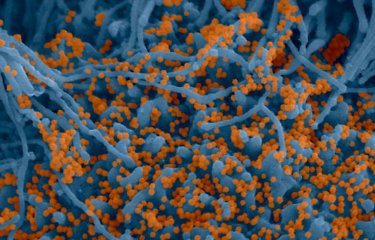-
Article | 2025.01.20
Genomes and Genetics
Exploring the genomes of bacteria, yeast, insect vectors and ultimately humans: that is the task of scientists in the Department of Genomes & Genetics. By investigating both simple and highly complex organisms, these scientists endeavor to shed new light on the nature of their genetic information.
-
Portrait | 2022.03.29
Jean-Claude Manuguerra: viruses, animals and humans
It all started with a veterinarian and a cross-eyed lionJean-Claude Manuguerra was 7 when he decided that he wanted to become a veterinarian, to "save animals" – like in the TV series Daktari, which he was an avid fan of at the time. In the series, Dr. Marsh Tracy was a vet who cared for local animals and ran the Wameru Study Center for Animal Behavior in Kenya. Marsh Tracy was aided in his day-...
-
News | 2022.10.05
A series of events to mark the bicentenary of Louis Pasteur’s birth
The Institut Pasteur is continuing to celebrate the bicentenary of Louis Pasteur's birth by organizing a major conference in December and also by partnering with events organized by other institutions and participating in official 2022 bicentenary festivals and conferences. Check out the calendar of events below and at www.pasteur2022.fr.
-
Document de presse | 2021.03.09
ComCor: Study examining the sociodemographic, behavioral and practical factors associated with SARS-CoV-2 infection
The ComCor study is conducted by the Institut Pasteur in partnership with the French National Health Insurance Fund (CNAM), Ipsos and Santé publique France.Intermediate analysis, on March 1, 2021The ComCor study, which currently covers the period from October 1, 2020 to January 31, 2021, includes 77,208 participants with acute SARS-CoV-2 infection, excluding healthcare workers (8.2% of those...
-
Document de presse | 2021.03.23
SARS-CoV-2 variants of interest can infect mice: host range extended
SARS-CoV-2, the virus responsible for COVID-19, is capable of infecting some species, while others are naturally resistant to it. This determines the "host range" of the virus. The SARS-CoV-2 host range includes humans, non-human primates, hamsters, mink and cats. Since the start of the pandemic, mice and rats had proven to be resistant to SARS-CoV-2, because their ACE2 receptor, which allows the...
-
News | 2023.12.11
Toscana virus causes unexplained encephalitis
A team from the Institut Pasteur in Paris, in collaboration with researchers in Spain, has identified Toscana virus in samples taken from patients in southern Spain. This virus is responsible for cases of encephalitis that have never been fully explained. The presence of this virus in the samples challenges the assumption that it was rare in the Mediterranean region. Thanks to this discovery,...
-
News | 2022.07.22
Improving bacterial strain classification for more effective surveillance
Genomic research on bacterial strains can provide the tools to develop a new classification system, leading to improved epidemiological surveillance, especially for antibiotic-resistant strains.
-
News | 2024.11.04
A novel method for producing DNA-based therapies
Scientists have combined enzyme and chemical techniques to develop an innovative method for producing synthetic DNA molecules. This novel approach opens up many new possibilities, especially for the production of large molecules that can be used for future therapies.
-
News | 2023.05.23
Creation of an European Biocluster for Emerging Infectious Diseases
The project "Infectious Diseases Cluster" (IDCluster) has been selected for the Healthcare Innovation 2030 plan. This strategy aims to strengthen biomedical research in France. Coordinated by Lyonbiopôle and supported by the Auvergne-Rhône-Alpes region, this European-scale cluster aims to accelerate progress in the field of emerging diseases, by working with the Institut Pasteur among others.
-
News | 2020.06.18
Phylogenetic analysis of SARS-CoV-2: strengths, limitations and over-interpretations
The Institut Pasteur's bioinformatics research teams have been closely involved in the response to COVID-19, working to analyze the sequencing data produced worldwide. On January 29, 2020, the Institut Pasteur, which is responsible for monitoring respiratory viruses in France, was the first in Europe to sequence the whole genome of the coronavirus known as SARS-CoV-2. Since then, it has sequenced...

